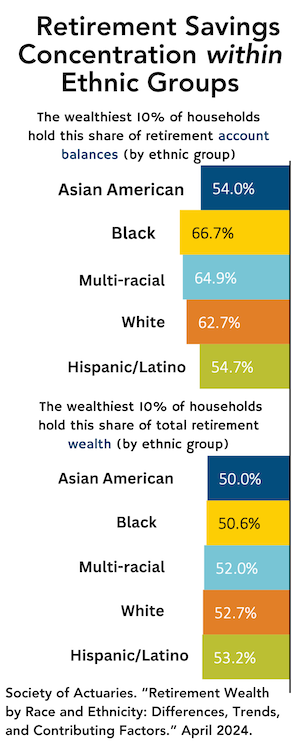In a fee-based advisor world that’s driven by the pursuit of assets under management, income annuities are anathema. When assets go into an annuity, they leave the AUM column and no longer generate fees.
Advisors even have a word—“annuicide”—to describe the act of sacrificing their own fee income to buy annuity income for clients. Fear of annuicide, some believe, stops at least some advisors from recommending income annuities.
Last December, a number of income annuity issuers, distributors and others formed a committee within the Boston-based Retirement Income Industry Association to address this issue.
Chaired by Gary Baker, president of the U.S. Division at CANNEX, a Toronto-based compiler of annuity data, the committee hopes to establish a standard method for valuing income annuities and reporting that value on advisor and broker-dealer books and on client statements.
Such a valuation would allow advisors who don’t accept commissions on the sale of an income annuity to charge an ongoing fee on the annuitized assets instead. It would also allow advisors and broker-dealers to assimilate no-load income annuities into their business models, recordkeeping systems and planning tools.
That’s a necessary, though perhaps not a sufficient, condition for what the annuity industry ultimately wants: the cross-over of income annuities from the commission-based insurance world into the wider, no-load, fee-based investment arena where many Americans keep their money.
“It’s not marketing issues that make advisors hesitant about putting income annuities into cash flow plans, or that make these products such a square peg in a round hole for advisors,” Baker said. “When you talk to a CFP, he’ll say, ‘I’m penalized when I sell these things. If a client has $2 million, and I put $500,000 into a SPIA, now I’m managing only $1.5 million.’
Meanwhile, he added, “Large distributors have figured out that putting a SPIA into a retirement plan is a good thing. But annuities are misaligned with their business models, which are based on AUM. By having some kind of valuation for the annuity, you can put it on the AUM report and use it in product allocation tools and see how it affects the value of the estate over time.”
But creating and agreeing on a standard for valuing an in-force annuity are no simple tasks. Industry participants already use a number of proprietary, non-standardized methods for valuing in-force contracts. Various legal departments have issued internal opinions on valuing annuities. Some executives fear that, if they report the value of annuities to clients, clients will equate them with liquid assets and want to trade them.
In the first quarter of 2011, the RIIA committee commissioned a survey by Mathew Greenwald & Associates of annuity manufacturers, insurance marketing organizations, broker-dealers and others and asked them, among other things, to indicate their preference among five valuation methods:
- “Fair market value” (the cost of replacing income stream at current interest rates)
- Initial premium (annuitized amount, net of fees and taxes)
- Commutation (remaining cash value, net of surrender charges)
- Death benefit (amount guaranteed to beneficiaries)
- The sum of annuity payments made to date
Of these five methods, “fair market value” was the consistent favorite. Over half of respondents (57%) said that the “fair market value” method was best when valuing the in-force annuity for a distributor’s AUM report or incentive programs.
For valuing the annuity on client statements, respondents were split between “fair market value” (37%) and cumulative payments (29%). Fifty-five percent thought that “fair market value” was appropriate for use in calculating fees for fee-based advisors and for incorporating an annuity into a planning process.
Baker explained that the fair market value of an annuity would be the cost of buying an equivalent product. That number would change with prevailing interest rates (going down when interest rates went up and vice-versa) and with the changing age of the contract owner.
While fair market value was the top vote getter, its exact definition is still up in the air. Thirty of 49 people said they “agree somewhat” but only five said they “agree completely” with this definition:
“The actuarial present value (using standard, industry-wide, gender based mortality tales) of the remaining benefits (including death benefits and guaranteed benefits) to be provided by the income annuity. This value would be tied to both long-term and short-term U.S. Treasury rates and can fluctuate with the market.”
Such values are not self-evident or intuitive. Under such a rule, if a 70-year-old paid $100,000 for a fixed life annuity and received $7,000 in the first year, the annuity value wouldn’t drop to $93,000. It might drop to only about $97,000, which is about what a 71-year-old might pay for a $7,000-a-year income.
The advisor’s fee would be charged on the $97,000, not the $93,000. According to Baker, a typical fee might range between 25 to 50 basis points a year, or about the same rate that a fee-based advisor would charge for bond assets under management. Depending on the policy of the broker-dealer or advisory firm, the same advisor might charge as much as 100 basis points or more to manage equity assets.
Can an advisor justify charging a fee to “manage” illiquid annuity assets? So far, different insurers have generated their own internal legal opinions on that question. (Advisors sometimes manage a client’s Social Security income; but would anyone try to charge a fee on the present value of the client’s future Social Security payments?)
Solving the “annuicide” problem may involve dealing with channel conflict issues. As income annuity issuers try to open up the no-load, fee-based distribution channel, they risk conflict with other channels, such as the captive agent channel, the bank channel, or the independent insurance agent channel.
On the one hand, these different distribution channels have different costs. On the other hand, annuity issuers are reluctant to—and may not be able to, for business or regulatory reasons— favor or disfavor one channel over another by offering the same annuity at a lower or higher price. An insurer with a commissioned captive sales force, for instance, might face internal rebellion if it offered no-load annuities to fee-based advisors for less.
There’s also no guarantee that a standard valuation method would ensure a boom, or even a bump, in annuity sales. While 61% of those polled by RIIA said it was “likely” that “a standardized value would encourage advisors to sell more income annuities,” only 16% considered it “very likely.”
Mathew Greenwald & Associates conducted the RIIA survey online in February and March 2011. Forty-nine of 185 firms polled responded; 18 respondents worked for a life insurance company with independent distribution, nine worked for an insurer with captive agents. Six worked for a service provider, five for independent broker-dealers and five for a captive broker-dealer.
The RIIA committee hopes to establish a valuation method that broker-dealers can use by the end of this year. “By the end of this quarter we’d like to nail down a standard,” CANNEX’s Baker said. Then we’ll move on to communication and implementation. A number of firms say they want and need this by the end of this year.”
© 2011 RIJ Publishing LLC. All rights reserved.




